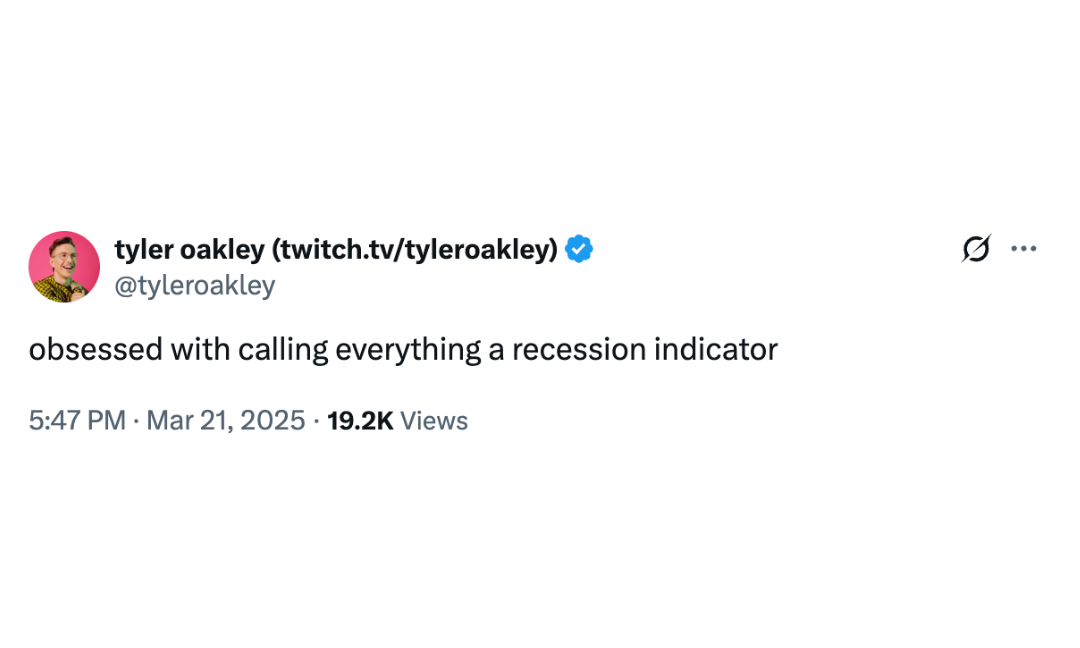Words by Sreya Nair | Feature Image: X
If you have opened TikTok or Instagram within the past few weeks, you have definitely seen fashion influencers pointing out trends of “recession indicators” – fashion fads that promote conservative looks and frugal spending habits. These often include minimalist and conservative looks such as long hemlines, high-necklines, and neutral colors. These trends make their way into beauty as well, with “recession blonde” promoting dark roots and “clean girl” makeup. Sure, these are beauty hacks for frugal folk – but can these really predict a recession?
A recession is a prolonged period of economic decline usually indicated by downturns in economic activity. True indicators of recessions include consecutive quarters of declining gross domestic product (GDP), high unemployment rates, inflation, and stock market decline – that doesn’t exactly include long skirts and overgrown roots.
However, there have been correlations between fashion trends and levels of economic stability – the Hemline Index is the most popular. The theory considers the length of skirts to indicate economic performance, with longer skirt lengths indicating worse performance and shorter skirt lengths indicating better performance. The introduction of the knee-high flapper dress during the booming economy of the Roaring 20s to the Great Depression-era rise of long skirts and pants, the 1965 expanded money supply introduction of the miniskirt to the 1973-75 oil embargo recession-induced revival of the maxi skirt, the 2000s growth in GDP return of miniskirts to the long pencil skirts of the 2007-09 Great Recession – this fluctuation between long and short lengths correlates with economic performance fluctuation.
Similarly, lipstick sales have been considered to be a recession indicator. Higher lipstick sales correlate economic downturn – during the 2008-09 financial crisis lipstick sales increased while other products decreased in sales. This was considered to be a small indulgence to consumers when other beauty products seemed too expensive to buy. But do these current trends mean that we are heading towards a recession?
U.S. markets for lipstick increased by 37% during the spring of 2024, and have slowly been increasing since. In 2025 we see trends of longer skirt lengths with midi skirts and maxi skirts, yet denim miniskirts are still a popular trend – so what does this mean? An important detail to remember is that correlation does not mean causation. Just because there is a pattern between hemlines and lipstick revenue with economic growth does not mean that fluctuations in beauty trends predict a recession.
While today’s global economy is concerning, with deceleration of economic growth and stock market decline, this still does not mean we are heading toward a recession. Seasons can change, tides turn, life goes on – all I’m trying to say is that these “recession indicators” aren’t actually indicators, but are instead predictors. There is no actual evidence that these fashion trends cause economic changes. This over-analysis of patterns should not make us spiral in fear of our economic future – it is fine to observe these trends, but their weight does not go far beyond a meme. The best plan of action in economic uncertainty is to prepare for rather than expect the worst. Maybe adhering to these recession indicator trends could help prepare for economic downturn – by adopting simple looks and splurging on cheaper indulgences your savings can be more readily available in cases of emergency.

